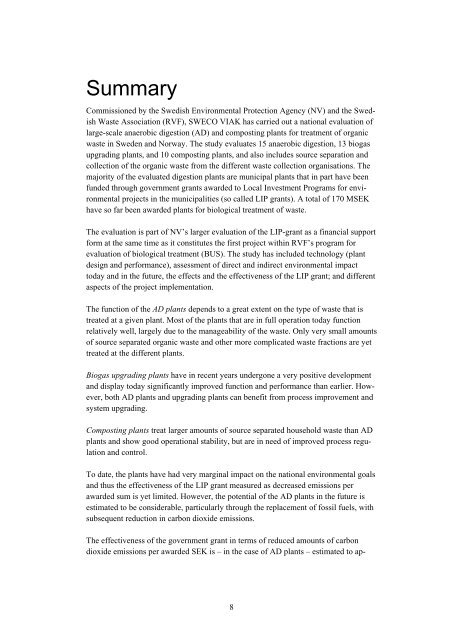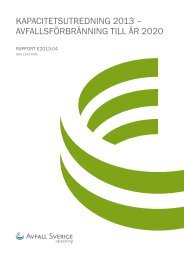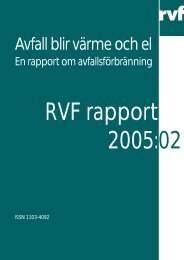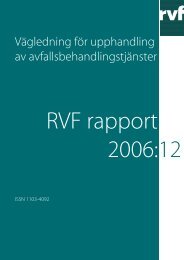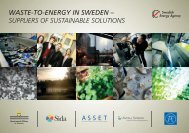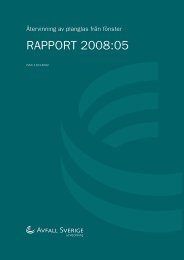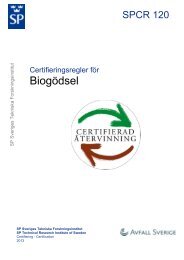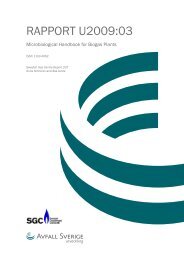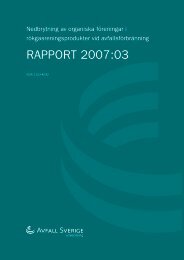2005:06 Utvärdering av storskaliga system för ... - Avfall Sverige
2005:06 Utvärdering av storskaliga system för ... - Avfall Sverige
2005:06 Utvärdering av storskaliga system för ... - Avfall Sverige
- No tags were found...
You also want an ePaper? Increase the reach of your titles
YUMPU automatically turns print PDFs into web optimized ePapers that Google loves.
SummaryCommissioned by the Swedish Environmental Protection Agency (NV) and the SwedishWaste Association (RVF), SWECO VIAK has carried out a national evaluation oflarge-scale anaerobic digestion (AD) and composting plants for treatment of organicwaste in Sweden and Norway. The study evaluates 15 anaerobic digestion, 13 biogasupgrading plants, and 10 composting plants, and also includes source separation andcollection of the organic waste from the different waste collection organisations. Themajority of the evaluated digestion plants are municipal plants that in part h<strong>av</strong>e beenfunded through government grants awarded to Local Investment Programs for environmentalprojects in the municipalities (so called LIP grants). A total of 170 MSEKh<strong>av</strong>e so far been awarded plants for biological treatment of waste.The evaluation is part of NV’s larger evaluation of the LIP-grant as a financial supportform at the same time as it constitutes the first project within RVF’s program forevaluation of biological treatment (BUS). The study has included technology (plantdesign and performance), assessment of direct and indirect environmental impacttoday and in the future, the effects and the effectiveness of the LIP grant; and differentaspects of the project implementation.The function of the AD plants depends to a great extent on the type of waste that istreated at a given plant. Most of the plants that are in full operation today functionrelatively well, largely due to the manageability of the waste. Only very small amountsof source separated organic waste and other more complicated waste fractions are yettreated at the different plants.Biogas upgrading plants h<strong>av</strong>e in recent years undergone a very positive developmentand display today significantly improved function and performance than earlier. However,both AD plants and upgrading plants can benefit from process improvement and<strong>system</strong> upgrading.Composting plants treat larger amounts of source separated household waste than ADplants and show good operational stability, but are in need of improved process regulationand control.To date, the plants h<strong>av</strong>e had very marginal impact on the national environmental goalsand thus the effectiveness of the LIP grant measured as decreased emissions perawarded sum is yet limited. However, the potential of the AD plants in the future isestimated to be considerable, particularly through the replacement of fossil fuels, withsubsequent reduction in carbon dioxide emissions.The effectiveness of the government grant in terms of reduced amounts of carbondioxide emissions per awarded SEK is – in the case of AD plants – estimated to ap-8


